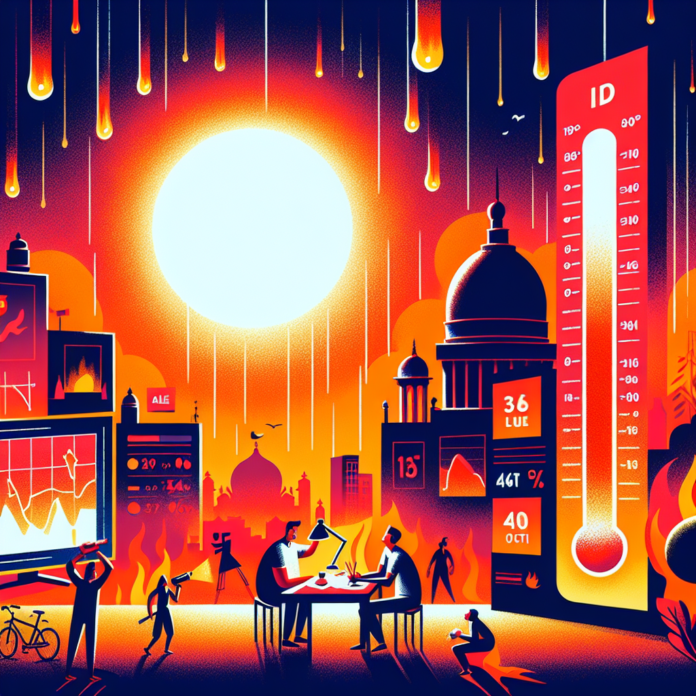Understanding Delhi’s October Heat: Why the High Temperatures Persist
Why is It Still So Hot In Delhi? Understanding October Heat
Delhi, normally known for its pleasant autumn weather, is experiencing an unusually hot October. As residents grapple with the persistent heat, many are left wondering why temperatures remain unseasonably high. This phenomenon, often referred to as “October Heat,” is a result of several interrelated factors.
Unusual Weather Patterns
One of the primary reasons for the prolonged heat is the delay in the retreat of the monsoon. Typically, by October, the monsoon winds withdraw, paving the way for cooler temperatures. However, this year, the monsoon’s retreat has been sluggish, causing a prolonged period of high humidity and elevated temperatures.
Global Warming and Climate Change
The impact of global warming cannot be overlooked. Rising global temperatures have contributed to changing weather patterns worldwide, and Delhi is no exception. The increased concentration of greenhouse gases traps more heat in the atmosphere, exacerbating the effects of October Heat. This global phenomenon has led to more frequent and intense heatwaves, affecting weather patterns across India.
Urban Heat Island Effect
Delhi’s rapid urbanization has also played a significant role in the prevailing heat. The city’s concrete buildings and asphalt roads absorb and retain heat, creating what is known as the “urban heat island” effect. This effect increases the temperature in urban areas compared to their rural surroundings, contributing to the ongoing heat in Delhi.
Reduced Vegetation and Green Cover
The reduction in green cover due to urban development further intensifies the heat. Trees and plants play a crucial role in regulating temperatures by providing shade and releasing moisture into the air. The loss of vegetation in Delhi has diminished this natural cooling effect, adding to the heat woes of the city.
Health Implications
The extended period of high temperatures can have serious health implications for Delhi’s residents. Heat-related illnesses such as heat exhaustion and heatstroke become more common, particularly affecting vulnerable groups like the elderly and children. It is essential for individuals to stay hydrated, avoid direct sunlight during peak hours, and take necessary precautions to protect themselves from the heat.
Future Outlook
Looking ahead, experts suggest that adapting to such weather changes will be crucial. Implementing sustainable urban planning practices, increasing green cover, and reducing carbon emissions can help mitigate the impact of October Heat. Additionally, raising public awareness about climate change and its effects can empower communities to take action.
In conclusion, the persistent heat in Delhi this October is a result of a combination of delayed monsoon withdrawal, global warming, urbanization, and reduced green cover. Addressing these issues requires a concerted effort from both the government and citizens to ensure a more sustainable and habitable environment for the future.


